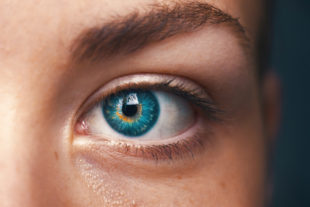Signs of ADHD: Common Symptoms and How Counseling Can Help
Christian Counselor Spokane
It’s interesting how we as human beings perceive the meaning of life, including the meaning of right from wrong, moral beliefs, cultural beliefs, how society views what is socially acceptable, how we view what is socially acceptable, and how we perceive and react to others. With mental health awareness growing, society is slowly understanding and recognizing the warning signs of those struggling with a mental health disorder.
 As a parent or caregiver, have you ever wondered why kids who have bursts of energy, low attention spans, and disruptive behaviors outside of the average range behave the way they do? What about adults who are constantly late to work, disorganized, forgetful, and have low attention spans?
As a parent or caregiver, have you ever wondered why kids who have bursts of energy, low attention spans, and disruptive behaviors outside of the average range behave the way they do? What about adults who are constantly late to work, disorganized, forgetful, and have low attention spans?
It’s easy to look at those individuals with much frustration and disappointment, especially when they are out in public and seen as socially unacceptable behaviors. Parents feel embarrassed, teachers are concerned, and spouses are frustrated. In this article I hope to answer those questions and/or concerns and give light to the situation by taking a closer look at the mental health issue commonly known as Attention Deficit Hyperactive Disorder (ADHD).
Let’s take a look at a couple of scenarios:
Scenario 1: A mother to a 7-year-old female child is concerned for her daughter, particularly regarding her daughter’s inability to stay focused and her disputative behaviors in class. The mother has received several notices from her daughter’s teacher explaining the girl’s behavior during class.
The teacher stated it is disrupting the rest of the students who are trying to learn. The 7-year-old child will blurt out answers, always getting out of her seat and running around the classroom, and is often fidgeting with things on or near her desk, at times even throwing objects, potentially harming another student or the teacher. The teacher recommended that the mother get her daughter assessed for possible ADHD.
Scenario 2: A male in his 30’s noticed his attention span was quite low for a typical adult. He expressed difficulties staying focused in graduate school and at work. He expressed difficulties focusing when he was younger. When he begins one task, he finds himself stopping midway and beginning another task, forgetting to complete the first task.
This became problematic for him both at school and at work as he would get frustrated as to why he gets easily distracted. After seeking professional input, he decided to get an assessment done for possible ADHD. His assessment came back positive. This brought relief to him, knowing there was a medical reason to his disorganization and short attention span.
Through psychoeducation, you as the parent/legal guardian, spouse, teacher, or friend can better understand what ADHD is and the reasoning behind a child, adolescent, or adult’s behaviors rather than looking at them with disappointment because they can’t control their behaviors or stay focused on one task.
In this article, I will discuss the symptoms and signs of ADHD and how counseling can help modify the behaviors.
What is ADHD?
According to The Diagnostic and Statistical Manual of Mental Disorders- 5th edition (DSM-5), Attention Deficit Hyperactive Disorder is a persistent pattern of inattention and/or hyperactivity impulsivity that interferes with functioning or development.
 Inattention manifests behaviorally in ADHD as wandering off task, lacking persistence, having difficulty sustaining focus, and being disorganized and is not due to defiance or lack of comprehension.
Inattention manifests behaviorally in ADHD as wandering off task, lacking persistence, having difficulty sustaining focus, and being disorganized and is not due to defiance or lack of comprehension.
Hyperactivity refers to excessive motor activity when it is not appropriate, or excessive fidgeting, tapping, or talkativeness.
Impulsivity refers to hasty actions that occur in the moment without forethought and that have high potential for harm to the individual.
ADHD begins during childhood. Symptoms of the disorder must be present before the age of 12 and in more than one setting such as school, work, home, etc.
To be considered for ADHD, an individual must meet the criteria listed below:
Symptoms of ADHD
- Inattention – Six (or more) of the following symptoms have persisted for at least six months to a degree that is inconsistent with developmental level and that negatively impacts directly on social and academic/occupational activities. For older adolescents and adults (age 17 and older), at least five symptoms are required:
- Often fails to give close attention to detail (overlooks or misses details) or makes careless mistakes (work is inaccurate) in schoolwork, at work, or during other activities
- Often has difficulty sustaining attention in tasks or activities, such as staying focused during lectures, conversations, or lengthy reading
- Often does not seem to listen when spoken to directly
- Often does not follow through on instructions and fails to finish schoolwork or workplace duties
- Often has difficulty organizing tasks and activities
- Often avoids, dislikes, or is reluctant to engage in tasks that require sustained mental effort
- Often loses things necessary for tasks or activities
- Is easily distracted by extraneous stimuli
- Is often forgetful in daily activities
- Hyperactivity and Impulsivity
- Often fidgets with or taps hands and feet, or squirms in seat
- Often leaves seat in situations when remaining seated is expected
- Often runs and climbs in situations where it is inappropriate (in adolescents or adults, may be limited to feeling restless)
- Often unable to play or engage in leisure activities quietly
- Is often “on the go,” acting as if “driven by a motor”
- Often talks excessively
- Often blurts out answers before a question has been completed
- Often has difficulty waiting their turn
- Often interrupts or intrudes on others
Signs of ADHD (visible externally)
- Preschool (4 years to 5 years) & Childhood (5 years to 12 years): A child showing symptoms of ADHD frequently experiences difficulties in school affecting both academic and/or social functioning.
- Adolescent (12 years to 18 years): According to the article, “Middle School-Based and High School-Based Interventions for Adolescents with ADHD” (2014), adolescents with ADHD are eight times more likely to drop out of school and less likely to receive any postsecondary education or training. By age 11 years, problems with delinquency and substance use becomes a major concern well into their adolescent years.
- Earn significantly lower school grades
- Score significantly lower on standardized achievement tests
- Adults (Over 18 years): An adult showing symptoms of ADHD frequently experiences difficulties at work, relationships with others, raising a family, or even running a household.
- Hyperactivity may manifest as extreme restlessness or wearing others out
The Benefits of Counseling for ADHD
Modifying the Behaviors:
ADHD is not always managed through psychosocial interventions. Medications might help a child, adolescent, or adult focus their thoughts and ignore outside distractions better at school, work, home, or in the community.
 A psychiatrist may be consulted for medication and pharmacologic adjunct to psychosocial interventions. It is typically recommended for a child, adolescent, or adult to combine both psychosocial interventions and medications to receive better results for treating and managing ADHD (Antshel & Olszewski,2014).
A psychiatrist may be consulted for medication and pharmacologic adjunct to psychosocial interventions. It is typically recommended for a child, adolescent, or adult to combine both psychosocial interventions and medications to receive better results for treating and managing ADHD (Antshel & Olszewski,2014).
Psychosocial Interventions:
- Cognitive Behavioral Therapy (CBT) is a well-researched approach that is based on the combination of thoughts, feelings, and behaviors that are all interconnected. By addressing or changing one of the three (thoughts, feelings, or behaviors) effectively, the other two will modify as well. The goal of CBT is to get a child, adolescent, or adult to identify any negative thoughts, feelings, or behaviors and changing them into a positive and healthier way (Antshel & Olszewski, 2014).
In this article we will focus on the behavioral component of CBT, which uses behavioral techniques to help modify automatic thoughts or beliefs. For example, with a child or adolescent with ADHD who throws objects 7-10 times a day (Behavior), there is a baseline for about 30-50 times a week in the classroom (Antecedent [where does the target behavior occur]). The goal is to decrease the negative behaviors by addressing why the child is throwing objects or why the child is mad.
- Behavioral Modification (B-Mod) focuses on changing only a person’s behavior so they may function positively at school, work, home, or in the community — for example, a child or adolescent with ADHD who throws objects 7-10 times a day or an adult who continues to miss deadlines at work due to outside distractions. The goal is to decrease the negative behaviors by implementing skills and techniques that may help to reduce the behaviors.
Some techniques/interventions that can be used to manage Inattention/ Hyperactivity and Impulsivity are:
- Role playing: Allows the child, adolescent, or adult to practice and solidify the skills learned in session with their therapist so they can use it outside of counseling.
- Reward system: For example, implementing a sticker chart (list of desired behaviors) or marble jar for children to visually see the progress they are making. For every 10 stickers or marbles the child earns, he or she is rewarded with an appropriate gift such as five extra minutes on the tablet/game/television, an ice-cream run, a small toy, etc. When the child reaches 20 stickers they can choose a place they want to go to, such as the movies or a restaurant.
For adolescents, each week he or she completes their chores and homework without being reminded, he or she is rewarded with extra time on the computer, tablet, television, etc. They may also earn cash (depending on the parents’ parenting style) or time out with their friends.
For adults, each week he or she is able to manage their hyperactivity and impulsivity, they can reward themselves by buying something small or treating themselves out.
- Daily Schedules/Hourly Schedules: Create a daily schedule and/or an hourly schedule to help stay on task. Find a baseline for the child, adolescent, or adult’s attention span. For example, how many activities can the child, adolescent, or adult do at once or can keep his or her attention to?
- Positive reinforcement: Always encourage, praise, and reinforce positive behaviors that the child, adolescent, or adult is trying to achieve. The goal is to strengthen the behavior so the positive behavior may occur again.
- Emotional self-regulation: A child, adolescent, or adult who struggles with ADHD can have difficulties managing their emotions, such as bursts of anger, frustration, or feelings of being upset that seem incongruent to the situation. A child, adolescent, or adult must learn to be aware of his or her feelings in the moment, process through those feelings, and express them in a healthy and positive way.
Some examples for expressing emotions in a healthy and positive way are going for a run or walk, exercising, writing, drawing, listening to music, taking five minutes to breathe, etc.
 The most important thing to remember is CONSISTENCY! When working with a child or adolescent, it is highly encouraged that mom and/or dad are involved. For example, if your child reaches his or her 10 stars or marbles, make sure to reward them appropriately and in a timely manner. Do not wait or push it off.
The most important thing to remember is CONSISTENCY! When working with a child or adolescent, it is highly encouraged that mom and/or dad are involved. For example, if your child reaches his or her 10 stars or marbles, make sure to reward them appropriately and in a timely manner. Do not wait or push it off.
Another example is helping your child or adolescent with his or her homework. If he or she has questions, try your best to get them an answer right away. Allow for open communication.
When interacting with anyone who has a mental health issue, we must first understand the true meaning behind their diagnosis. It is easy for individuals to pass judgement on someone who has a mental health issue just because they do not understand the diagnosis.
In the book of John, Jesus explains to his disciples that the beggar who was born without sight did not sin to become blind. Through the works of God, Jesus helped the blind man see for the first time. Jesus did not pass judgement nor see the blind man differently. We must do our part by learning to understand those who are different and help those who struggle with mental health issues.
A multi-factorial approach should be considered when treating and assessing an individual diagnosed with ADHD. Understanding and recognizing the symptoms and warning signs of ADHD can help you interact in a positive and healthy way with a child, adolescent, or adult struggling with ADHD. Staying consistent with any techniques and/or intervention can help solidify the desirable behavior. Remember, we are all humans, we all want to be loved and understood.
References
Antshel, K.M. & Olszewski, A.K. Cognitive Behavioral Therapy for Adolescents with ADHD. Child and Adolescent Psychiatric Clinics of North America: ADHD Non-Pharmacologic Intervention, 23, 825-842.
DuPaul, G.J., Gormley, M.J & Laracy, S.D. 2014. School-Based Interventions for Elementary School Students with ADHD. Child and Adolescent Psychiatric Clinics of North America: ADHD Non-Pharmacologic Intervention, 23, 687-697.
Evans, S.W., Langberg, J.M., Egan, T & Molitor, S.J. 2014. Middle School-Based and High School-Based Interventions for Adolescents with ADHD. Child and Adolescent Psychiatric Clinics of North America: ADHD Non-Pharmacologic Intervention,699-715.
Photos
“Frazzled,” Courtesy of Tim Gouw, Unsplash.com, CC0 License; “Out of,” Courtesy of Stefan Cosma, Unsplash.com, CC0 License; “Eye,” Courtesy of Amanda Dalbjorn, Unsplash.com, CC0 License; “You can’t see me,” Courtesy of Caleb Woods, Unsplash.com, CC0 License





